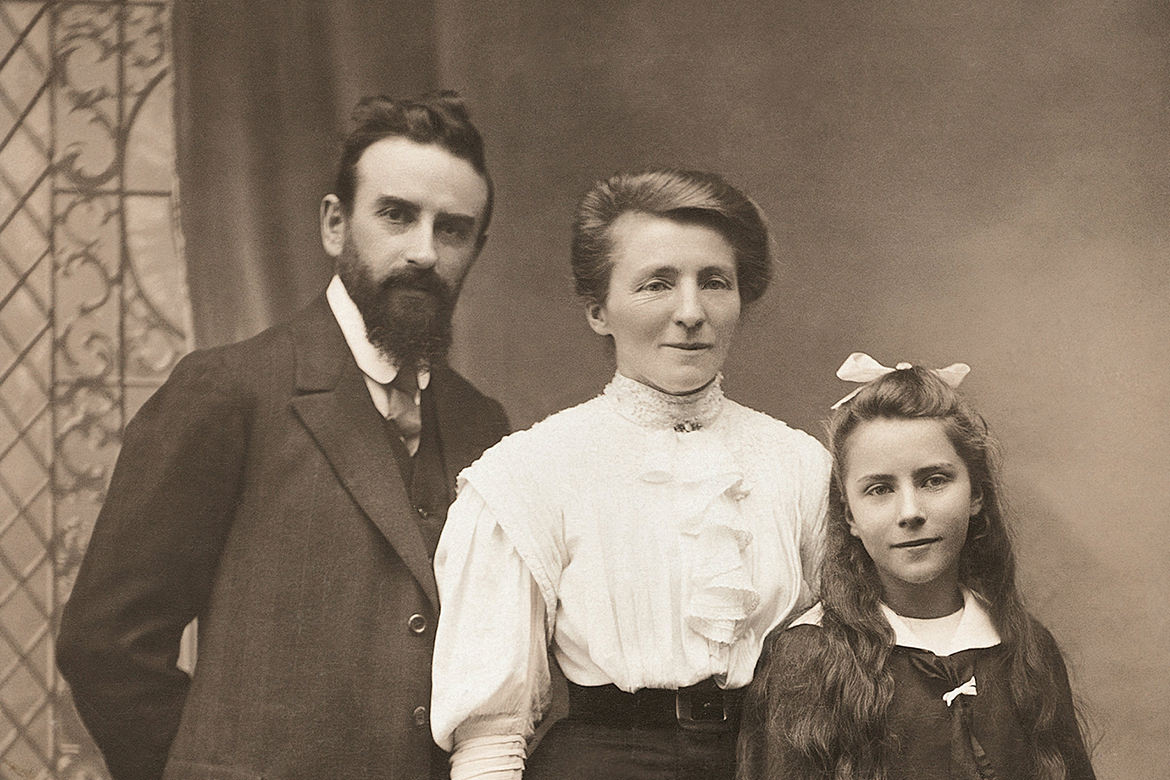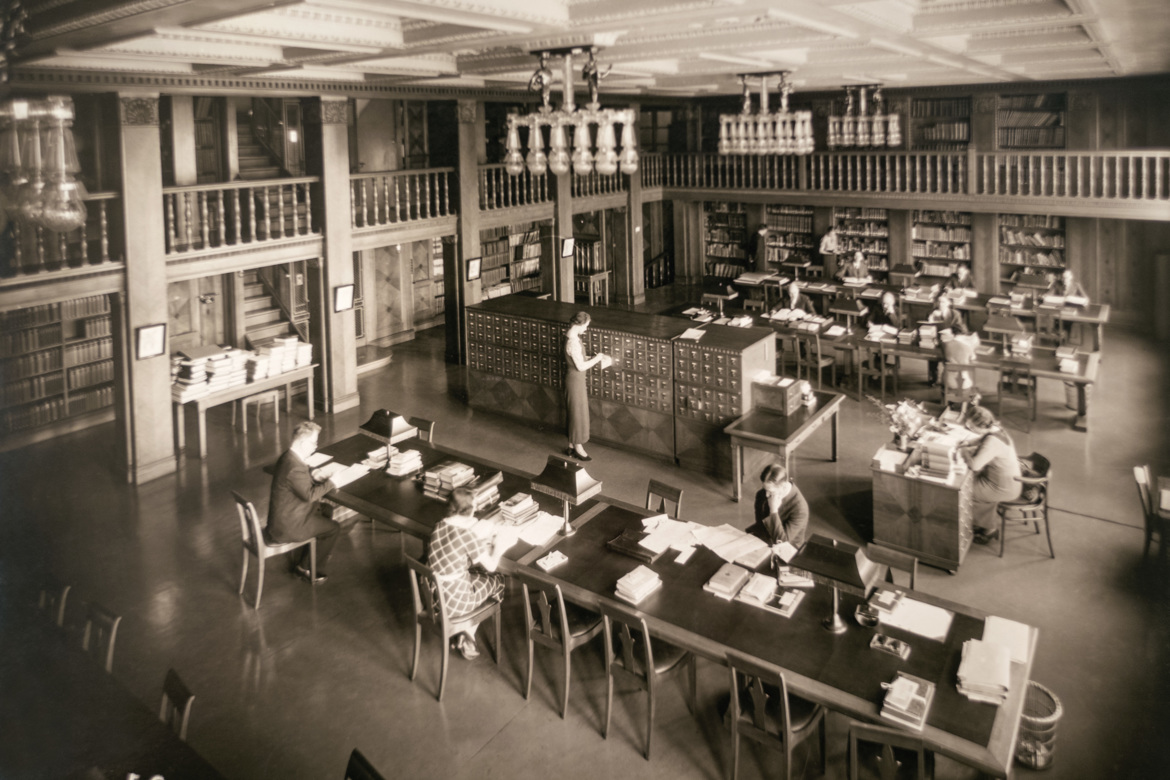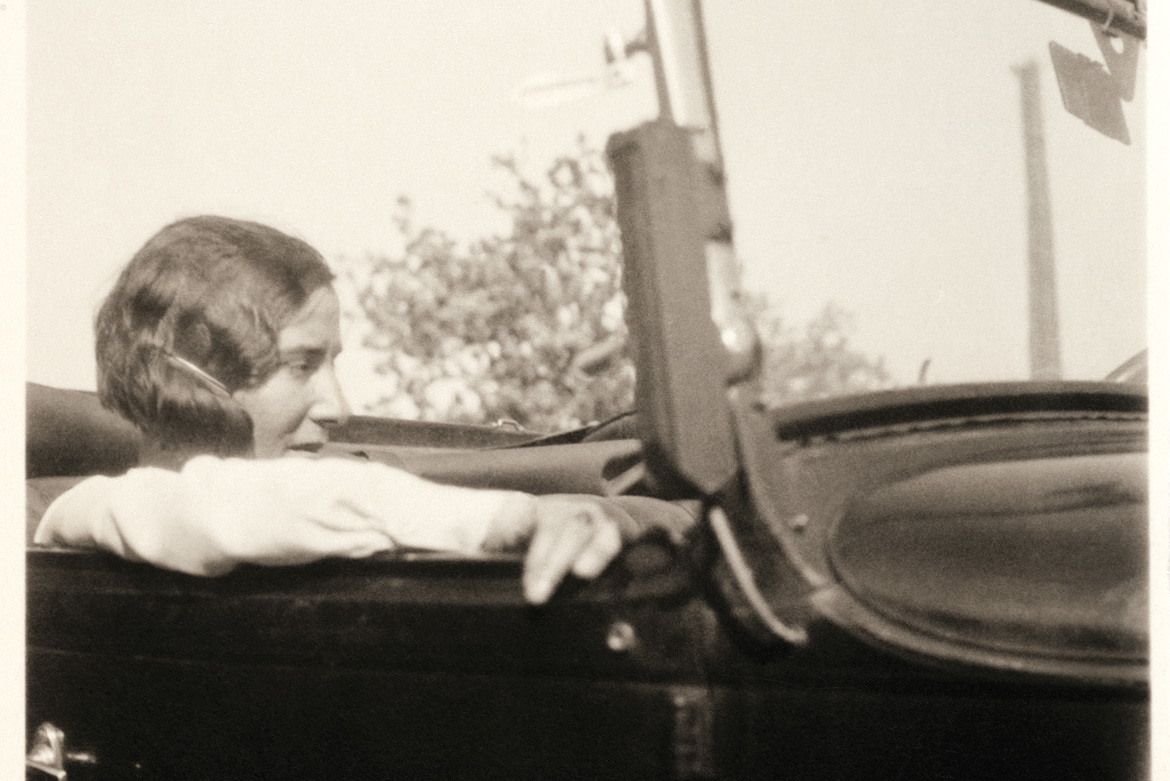1901
Alice Golay, the only child of Paul Golay and Ida Etter, was born on 14 August in Rovray, in the north of the canton of Vaud.
1904-10
Childhood in the small town of Clarens near Montreux. Discovered music and the power of words.
1910
Paul Golay left his teaching position to take over running the newspaper Le Grutléen in Lausanne and to devote his time to the nascent socialist party. This change led to financial insecurity and unsettled the family dynamic.
1915
Alice Golay shared her father’s political convictions and joined the ‘Jeunesses socialistes’ (Young Socialists).
1917
She left the Ecole supérieure de jeunes filles (College of Higher Education for girls) to attend the Conservatoire de Lausanne. Her virtuosity in playing the piano was compromised when her hands proved too slight for the required repertoire.
1922
After qualifying to teach piano, she went to Heidelberg to perfect her German. She then followed courses in English and shorthand typing, which enabled her to consider a career change.
1925-39
Alice started work as a shorthand typist at the Bureau International du Travail (BIT/ILO International Labour Office) and moved to Geneva. She went on to work for this organisation for fifteen years, leading the life of a free and independent woman, disinclined to get married. She began to write.
1939
When war was declared, the BIT/ILO withdrew to Montreal. Unemployed, Alice finalised her first novel, Nuages dans la main which, with C.F. Ramuz’ support, she published at the Guilde du Livre in 1940. She signed it with her chosen pen name, Alice Rivaz.
1940-45
Alice Rivaz published articles and short stories. She collaborated with the Guilde du Livre, and C.F. Ramuz entrusted her with the preparation of the Anthologie de la poésie française (Anthology of French Poetry) published in 1943.
1945
She published “Présence des femmes”, the first text on the status of women in literature and which preceded Simone de Beauvoir’s feminist works.
1946
The Parisian ‘Éditions Julliard’ published Comme le sable (As the sand). Set in 1928, this novel features characters working in an international organisation in Geneva, with the economic crisis looming in the background.
1947
Stricken with tuberculosis, Alice Rivaz spent several months in a health resort in Montana (now known as Crans-Montana, in the canton of Valais). She published La Paix des ruches, which constitutes the literary development of her feminist thinking. This novel did not find its audience. Out of financial necessity, Alice Rivaz returned to work for the BIT/ILO, where she became a “research assistant”.
1947-59
Her job at the BIT/ILO and caring for her mother, widowed in 1951, forced Alice to put her literary career on hold.
1959-61
After her mother passed away, Alice Rivaz took early retirement and focused entirely on writing. After 15 years of silence, she wrote a collection of short stories entitled Sans alcool.
1966
Encouraged by her friend Marcel Raymond, a Genevese writer and teacher, Alice Rivaz published her collection of autobiographical poetic prose Comptez vos jours with Corti, a prestigious publishing house in Paris.
1967
Alice Rivaz wrote Le Creux de la vague (The trough of the wave), a sequel to Comme le sable (As the sand). The plot is set in 1933 and depicts the rise of fascism and anti-Semitism in Geneva. She also tackled the issue of homosexuality, thus presenting three taboo subjects at the time.
1968
Alice Rivaz wrote an account of her early childhood, L'Alphabet du matin, interweaving her family’s story with the social history of the early 20th century.
1970
Second edition of La Paix des ruches, prefaced by Marcel Raymond. The text finally found its audience in the next generation of readers, some twenty years after the first edition. After a second collection of short stories, De Mémoire et d’oubli (1973), critics unanimously hailed Alice Rivaz’ last novel, Jette ton pain (Cast thy bread), as a seminal work of literature.
1980
Alice Rivaz received the Grand Prix Ramuz for her body of work. Ce nom qui n’est pas le mien collates Alice Rivaz’ essays and autobiographical texts published in various journals.
1983-85
Traces de vie (Traces of life), which presents extracts from the notebooks the author wrote in every day from 1939 to 1982, was followed by a final essay on her poet friend entitled Jean-Georges Lossier poésie et vie intérieure (Jean-Georges Lossier, poetry and inner being).
1998
Alice Rivaz lived her last five years in the nursing home Les Mimosas in Genthod (Canton of Geneva). She passed away on 27 February and was buried in the Cimetière des Rois, a cemetery reserved for famous Genevans also known as the “Genevan Pantheon”.

Origins
Growing up with exceptionally politicised parents, Alice Rivaz soon developed a critical perspective on Swiss conventions.

Becoming a writer
Thanks to an independent lifestyle and a home of her own in Geneva, Alice Rivaz published her first novel in 1940.

Writing history
The author questions the normality of sheltered lives, and their blindness in the aftermath of the First World War.
